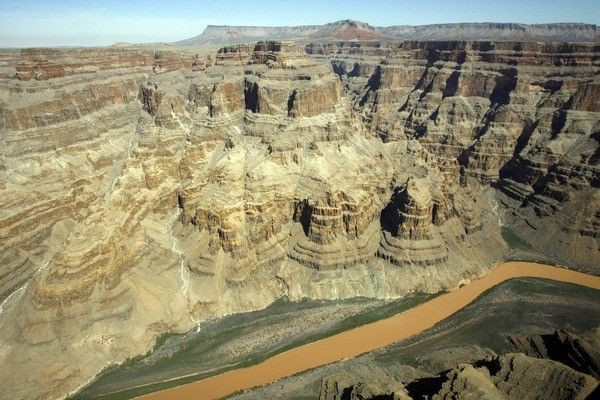Humpback Chub: Fish Endemic To Colorado River Basin 'Downlisted' From Endangered To Threatened
KEY POINTS
- U.S. Fish & Wildlife Service reclassified the humpback chub's conservation status
- It was listed as endangered decades ago due to disruptions from dam constructions
- "It's not the time to ease protections": Environmentalists
U.S. authorities officially reclassified the humpback chub from "endangered" to "threatened." The decision follows years of efforts to save the rare fish species, but conservationists are questioning the move.
The humpback chub gets its name from the bump behind its head, the U.S. Fish & Wildlife Service (FWS) noted in a news release. First documented in the Lower Colorado River basin of the Grand Canyon in 1940s, the species was listed as endangered in 1967 and gained full protection in 1973 under the Endangered Species Act.
The reason that the species, which is endemic to the Colorado River basin, needed to be protected was due to disruptions from the construction of a dam. As such, among the efforts to protect the humpback chub include water management to ensure there's enough in-stream flow in their range.
In the news release, the FWS announced that it is actually downlisting the species from being endangered to threatened. A species is considered to be "endangered" if there is a danger of its extinction "throughout all or significant portions" of its range, the rule, published Monday and set to take effect on Nov. 17, noted. On the other hand, a "threatened" listing means that the species is "likely" to become endangered in the "foreseeable future."
"We are reclassifying the humpback chub from endangered to threatened (i.e., "downlisting") because we have determined that the species is no longer in danger of extinction throughout all or a significant portion of its range," the rule stated, noting that its current status has improved because of conservation actions.
"Today's action is the result of the collaborative conservation that is needed to ensure the recovery of listed species," Matt Hogan, the Acting Regional Director for the Service, said in the news release.
Humpback chub is swimming closer to recovery! Based on the best available science, @USFWS is reclassifying humpback chub from endangered to threatened under the #ESA. We continue working to fully recover the species: https://t.co/hbzsR1b8Ae
— US Fish and Wildlife (@USFWSMtnPrairie) October 15, 2021
Video credit: Freshwaters Illustrated pic.twitter.com/39q4mhJXTQ
However, some environmentalists are opposing the move, citing current threats that the species continues to face, the Associated Press (AP) noted. For instance, the U.S. Bureau of Reclamation had declared a water shortage in the Colorado River only two months ago.
"When 'code red' is called on a river, it's not the time to ease protections from one of the river's most vulnerable inhabitants," Wild Rivers Program Director at WildEarth Guardians, Jen Pelz, said in a press release, according to WildEarth Guardians.
"It also is perplexing that the agency would be going to so much trouble to reclassify these endangered fish at a time when so much uncertainty exists regarding climate change and the ability to continue to fund the suite of heroic measures it undertakes annually for these species to survive," Pelz added.
In the statement, FWS noted that the final rule to reclassify the species "does not relinquish" the current monitoring and conservation efforts since it will still be protected under the Endangered Species Act as a threatened species.
The humpback chub is among the four endemic fish to survive in the Colorado River basin, WildEarth Guardians noted. The three others—Colorado pikeminnow, bonytail chub and the razorback sucker—also suffered significant population declines in the mid-20th century due to the dam constructions.

© Copyright IBTimes 2025. All rights reserved.






















